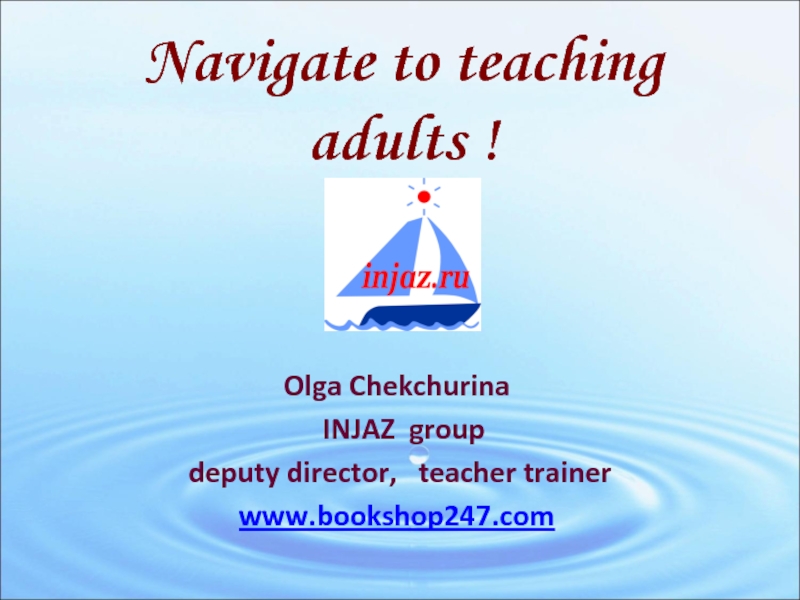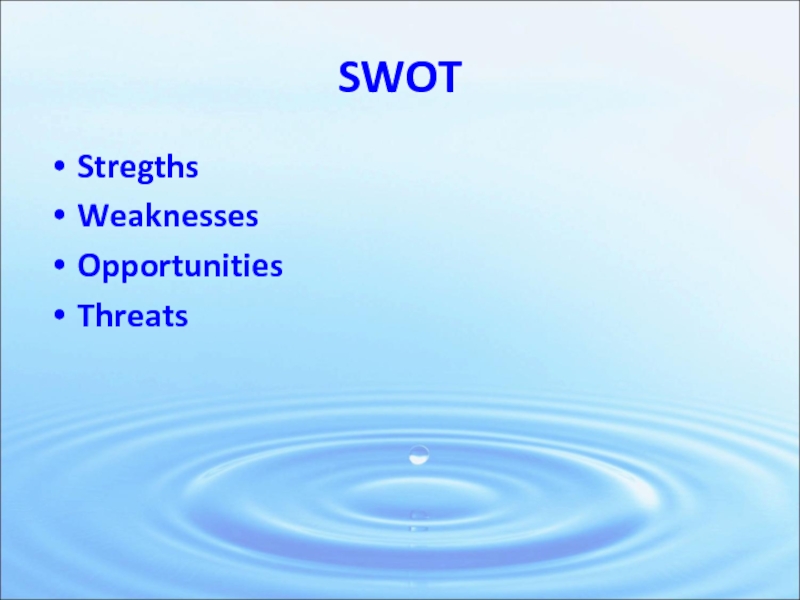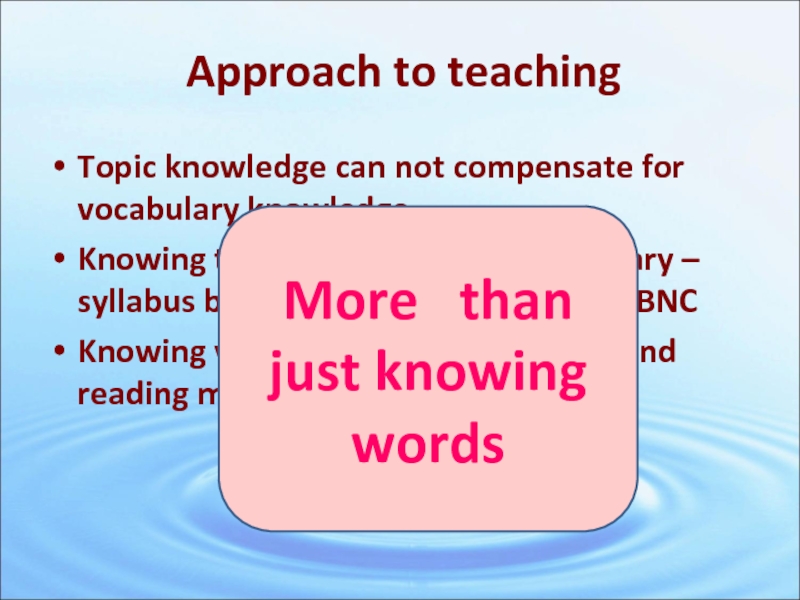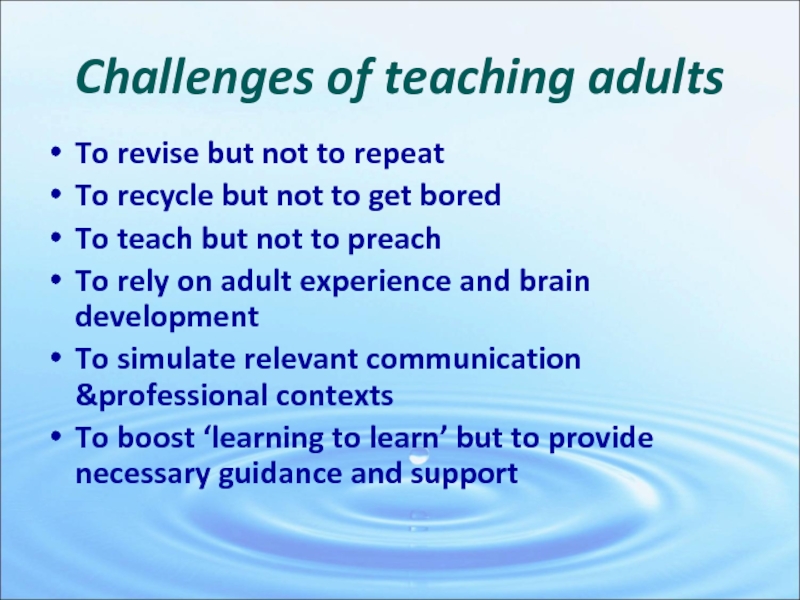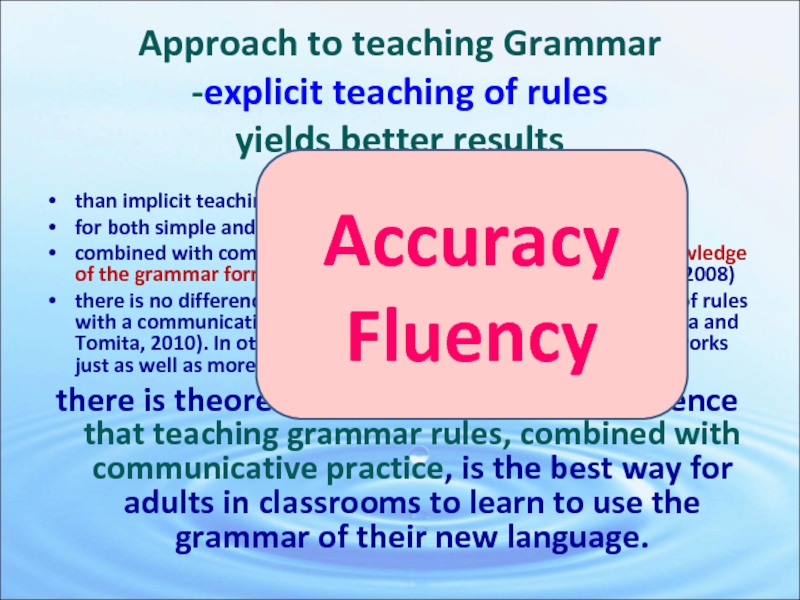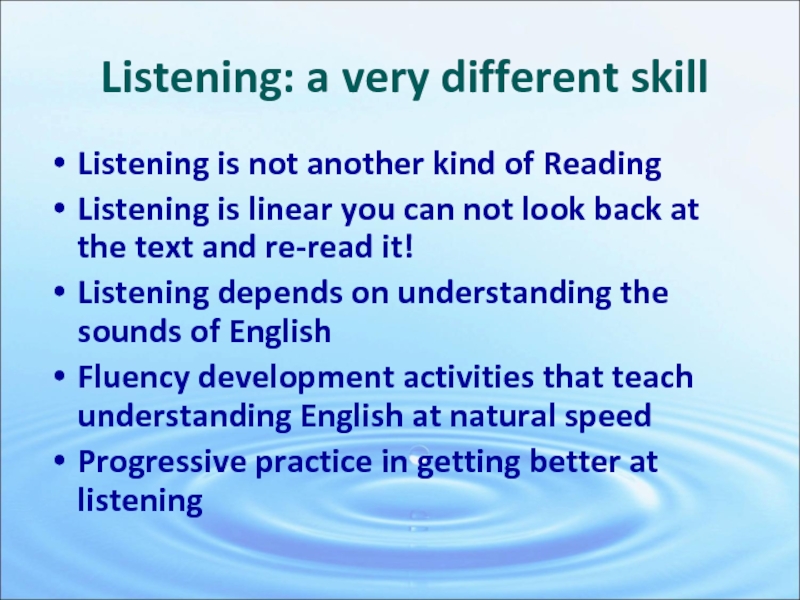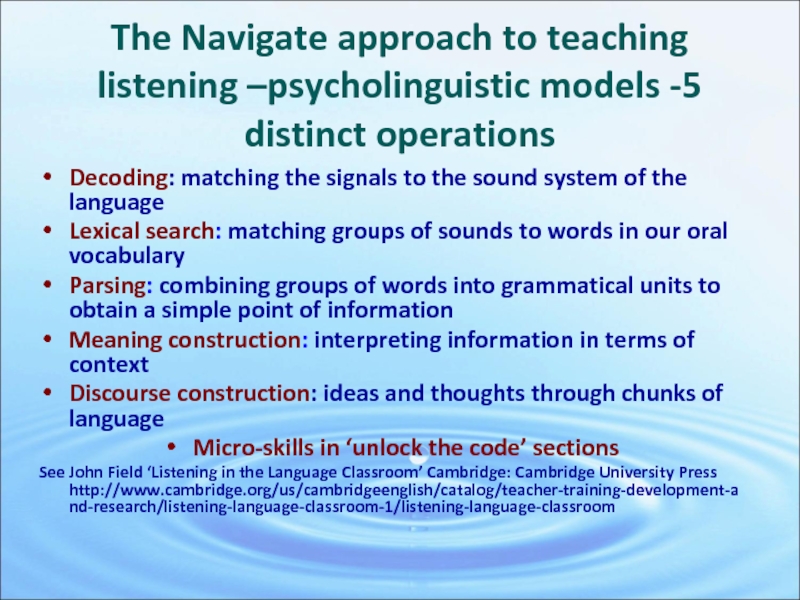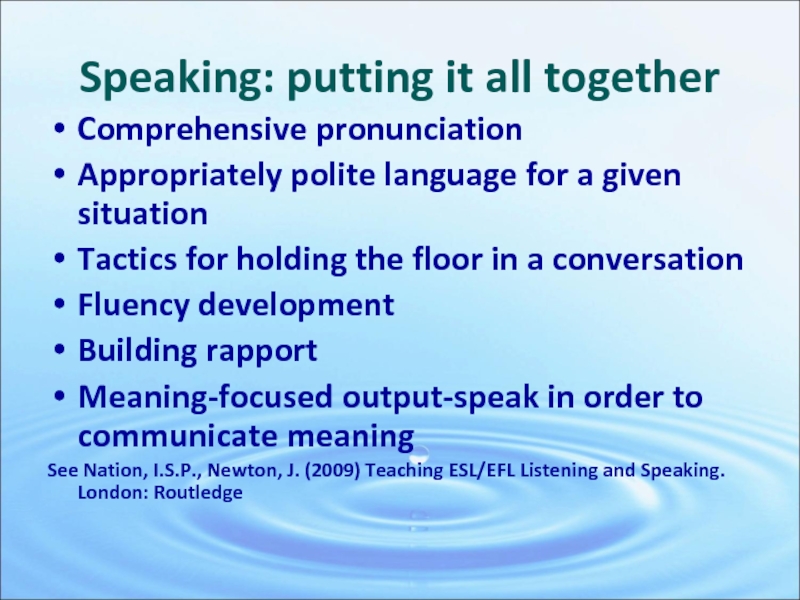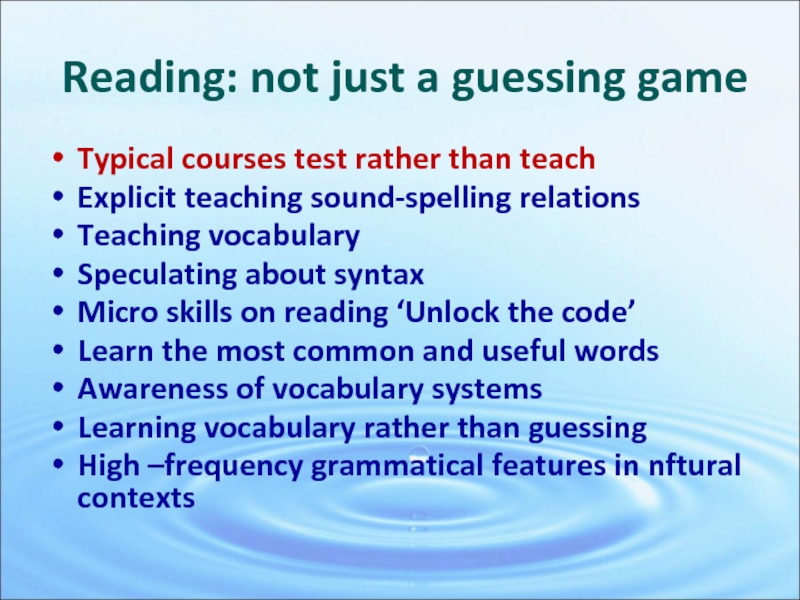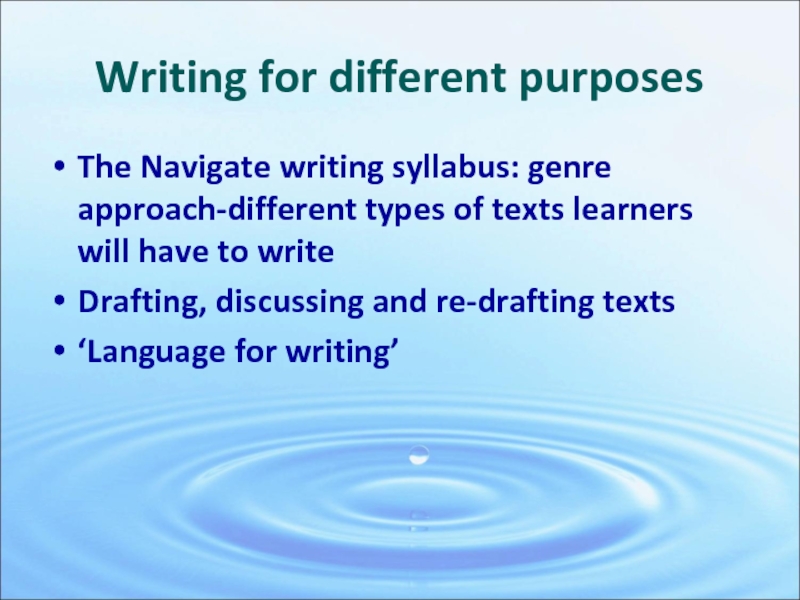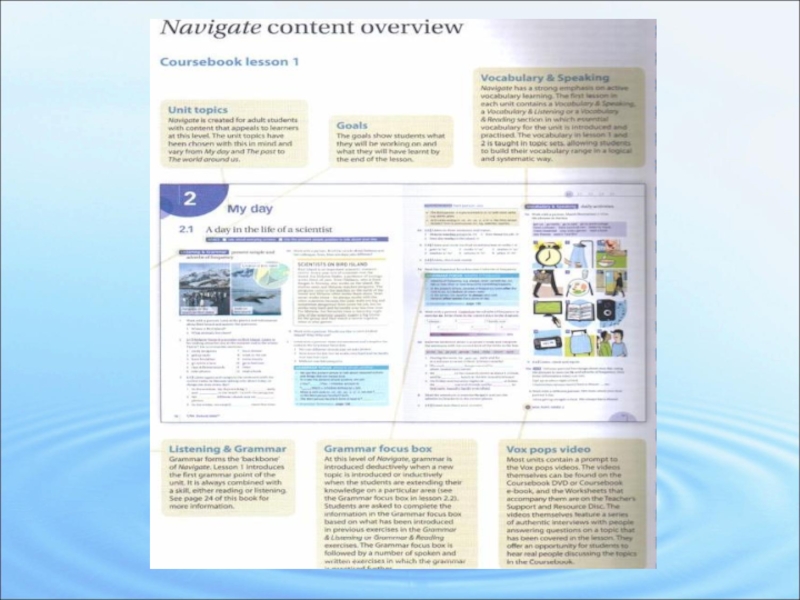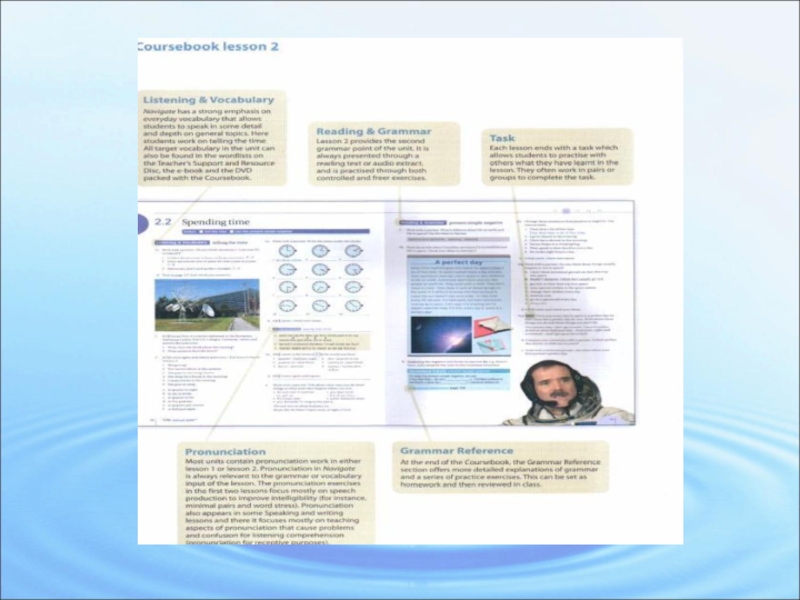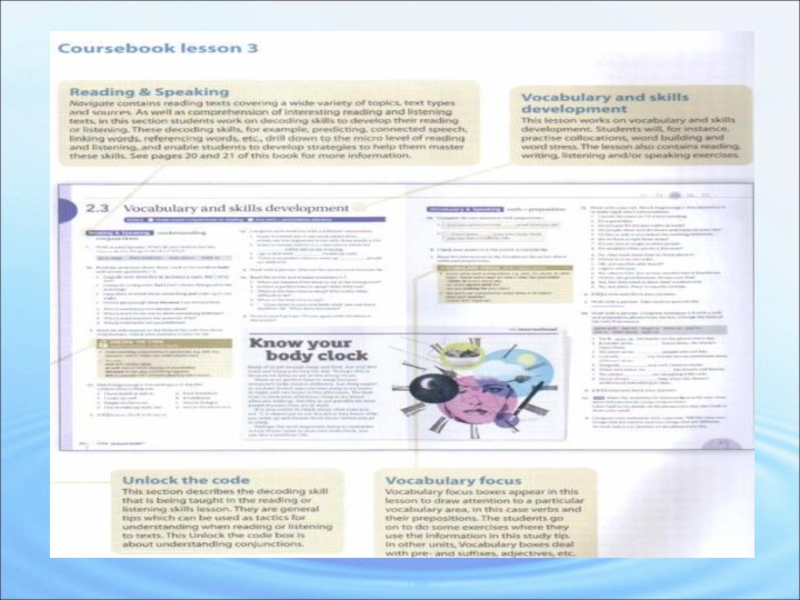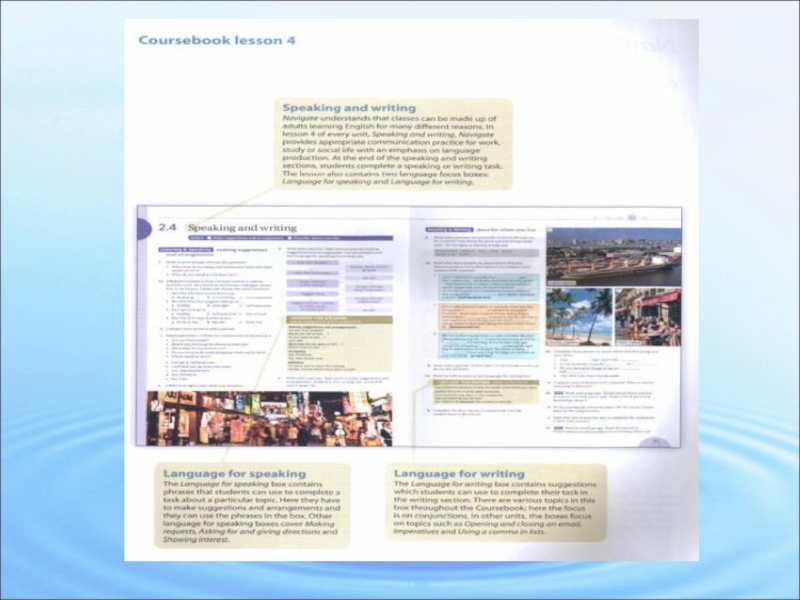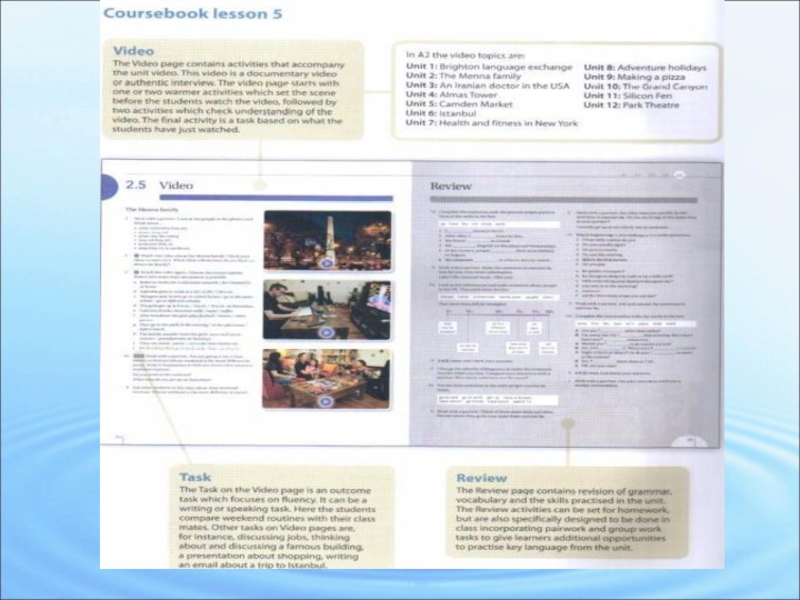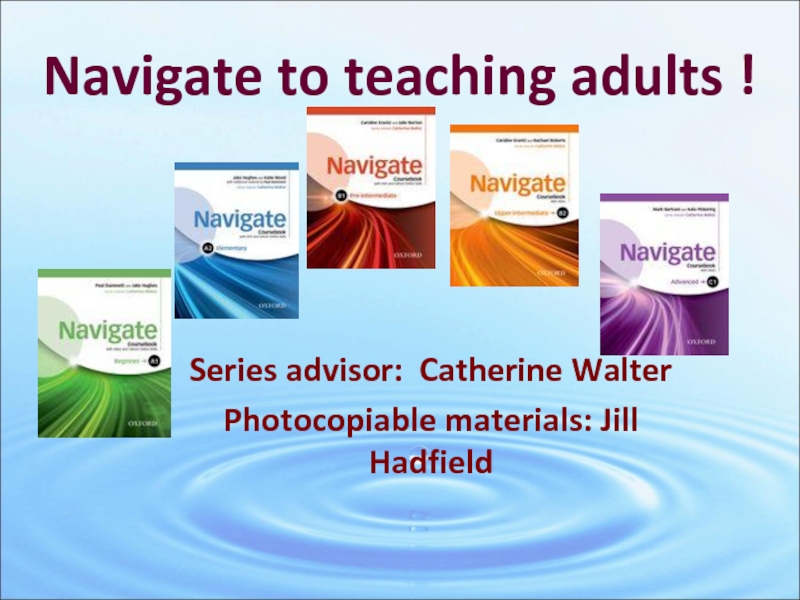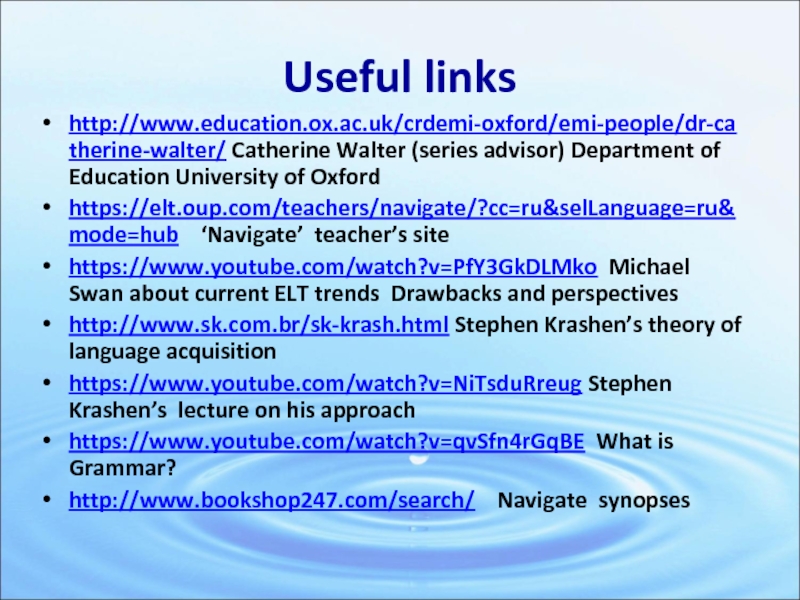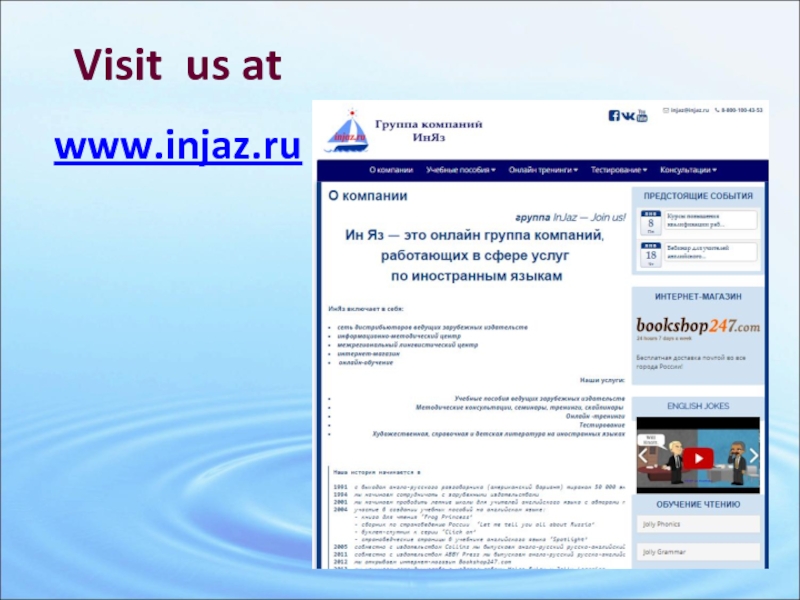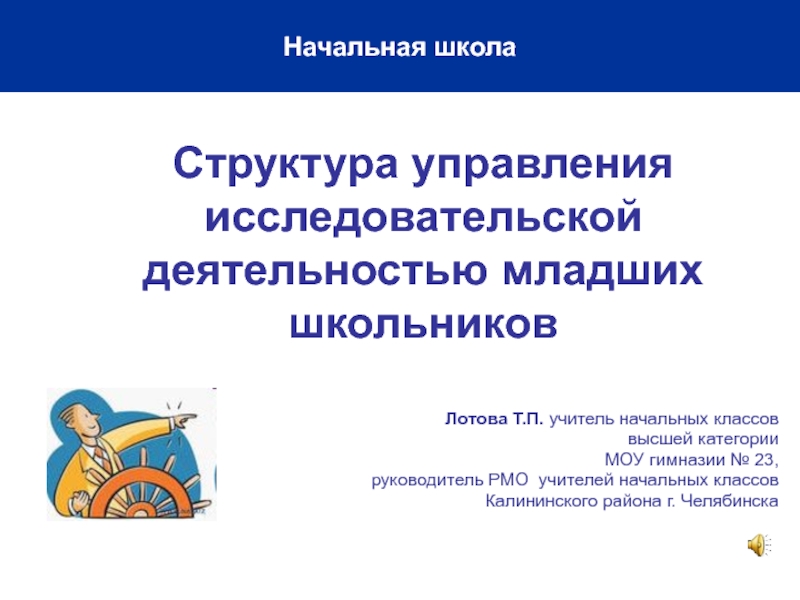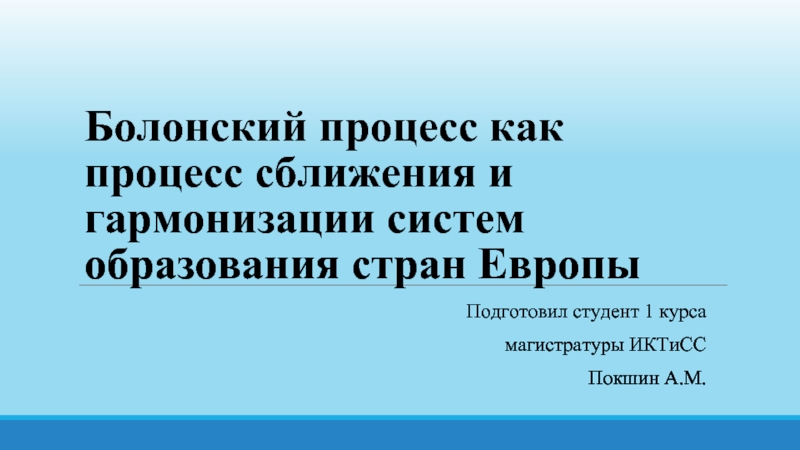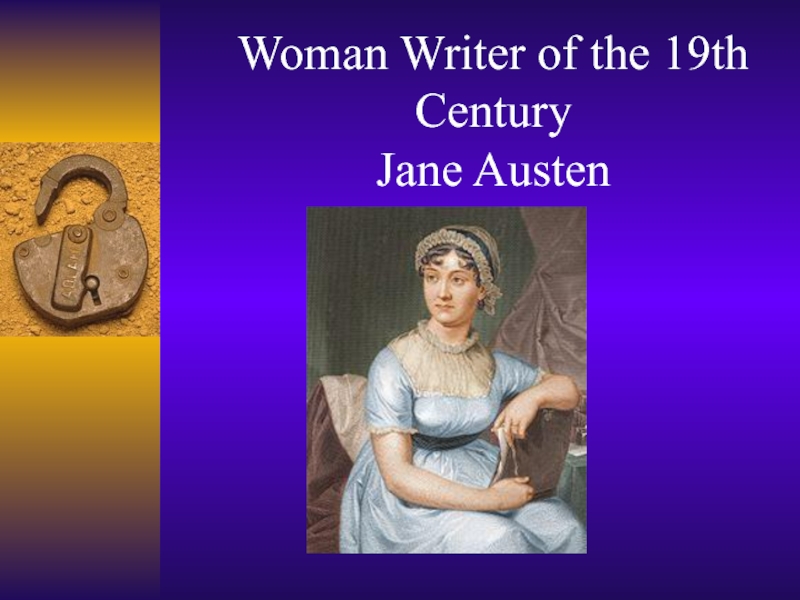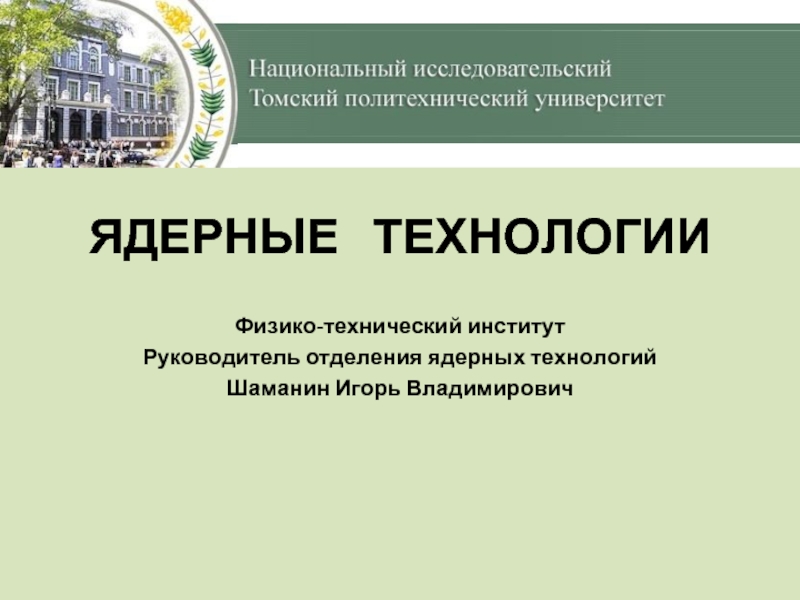- Главная
- Разное
- Дизайн
- Бизнес и предпринимательство
- Аналитика
- Образование
- Развлечения
- Красота и здоровье
- Финансы
- Государство
- Путешествия
- Спорт
- Недвижимость
- Армия
- Графика
- Культурология
- Еда и кулинария
- Лингвистика
- Английский язык
- Астрономия
- Алгебра
- Биология
- География
- Детские презентации
- Информатика
- История
- Литература
- Маркетинг
- Математика
- Медицина
- Менеджмент
- Музыка
- МХК
- Немецкий язык
- ОБЖ
- Обществознание
- Окружающий мир
- Педагогика
- Русский язык
- Технология
- Физика
- Философия
- Химия
- Шаблоны, картинки для презентаций
- Экология
- Экономика
- Юриспруденция
Navigate to teaching adults презентация
Содержание
- 1. Navigate to teaching adults
- 2. What’s the problem? –We do not meet
- 3. Up to you! Think of some popular
- 4. SWOT Stregths Weaknesses Opportunities Threats
- 5. Do you agree with that?
- 6. Approach to teaching Topic knowledge can not
- 7. Challenges of teaching adults To revise but
- 8. Approach to teaching Grammar -explicit teaching of
- 9. Listening: a very different skill Listening
- 10. The Navigate approach to teaching listening –psycholinguistic
- 11. Speaking: putting it all together Comprehensive pronunciation
- 12. Reading: not just a guessing game
- 13. Writing for different purposes The Navigate writing
- 14. http://injaz.ru/navigate/
- 15. Follow-up reading http://injaz.ru/navigate/
- 21. Navigate to teaching adults !
- 22. Useful links http://www.education.ox.ac.uk/crdemi-oxford/emi-people/dr-catherine-walter/ Catherine Walter (series
- 23. Visit us at www.injaz.ru
Слайд 1Navigate to teaching adults !
Olga Chekchurina
INJAZ group
deputy director,
www.bookshop247.com
Слайд 2What’s the problem? –We do not meet expectations of truly adult
Young adults 18 – 30 yrs Adults : 35+
Most modern ELT courses are labeled as ‘young adults’ and they certainly are
Adults need THEIR content, system of scaffolded language and speech activities
Adults have life experience we can rely on
Adult thinking is not the same as young adult thinking
Слайд 3Up to you!
Think of some popular topics in ELT books which
Think of some topics that should be included in ELT syllabus for truly adult students
How should we present new language if we teach truly adult students?
Слайд 6Approach to teaching
Topic knowledge can not compensate for vocabulary knowledge
Knowing the
Knowing vocabulary makes listening and reading more rewarding
More than just knowing words
Слайд 7Challenges of teaching adults
To revise but not to repeat
To recycle but
To teach but not to preach
To rely on adult experience and brain development
To simulate relevant communication &professional contexts
To boost ‘learning to learn’ but to provide necessary guidance and support
Слайд 8Approach to teaching Grammar
-explicit teaching of rules
yields better results
than
for both simple and complex forms (Spada and Tomita, 2010)
combined with communicative practice, leads to unconscious knowledge of the grammar forms that lasts over time (Spada and Lightbown, 2008)
there is no difference in results between integrating the teaching of rules with a communicative activity and teaching them separately (Spada and Tomita, 2010). In other words, presentation-practice-production works just as well as more integrated methods.
there is theoretical support and hard evidence that teaching grammar rules, combined with communicative practice, is the best way for adults in classrooms to learn to use the grammar of their new language.
Accuracy
Fluency
Слайд 9 Listening: a very different skill
Listening is not another kind of
Listening is linear you can not look back at the text and re-read it!
Listening depends on understanding the sounds of English
Fluency development activities that teach understanding English at natural speed
Progressive practice in getting better at listening
Слайд 10The Navigate approach to teaching listening –psycholinguistic models -5 distinct operations
Decoding:
Lexical search: matching groups of sounds to words in our oral vocabulary
Parsing: combining groups of words into grammatical units to obtain a simple point of information
Meaning construction: interpreting information in terms of context
Discourse construction: ideas and thoughts through chunks of language
Micro-skills in ‘unlock the code’ sections
See John Field ‘Listening in the Language Classroom’ Cambridge: Cambridge University Press http://www.cambridge.org/us/cambridgeenglish/catalog/teacher-training-development-and-research/listening-language-classroom-1/listening-language-classroom
Слайд 11Speaking: putting it all together
Comprehensive pronunciation
Appropriately polite language for a given
Tactics for holding the floor in a conversation
Fluency development
Building rapport
Meaning-focused output-speak in order to communicate meaning
See Nation, I.S.P., Newton, J. (2009) Teaching ESL/EFL Listening and Speaking. London: Routledge
Слайд 12 Reading: not just a guessing game
Typical courses test rather than
Explicit teaching sound-spelling relations
Teaching vocabulary
Speculating about syntax
Micro skills on reading ‘Unlock the code’
Learn the most common and useful words
Awareness of vocabulary systems
Learning vocabulary rather than guessing
High –frequency grammatical features in nftural contexts
Слайд 13Writing for different purposes
The Navigate writing syllabus: genre approach-different types of
Drafting, discussing and re-drafting texts
‘Language for writing’
Слайд 21
Navigate to teaching adults !
Series advisor: Catherine Walter
Photocopiable materials: Jill Hadfield
Слайд 22Useful links
http://www.education.ox.ac.uk/crdemi-oxford/emi-people/dr-catherine-walter/ Catherine Walter (series advisor) Department of Education University
https://elt.oup.com/teachers/navigate/?cc=ru&selLanguage=ru&mode=hub ‘Navigate’ teacher’s site
https://www.youtube.com/watch?v=PfY3GkDLMko Michael Swan about current ELT trends Drawbacks and perspectives
http://www.sk.com.br/sk-krash.html Stephen Krashen’s theory of language acquisition
https://www.youtube.com/watch?v=NiTsduRreug Stephen Krashen’s lecture on his approach
https://www.youtube.com/watch?v=qvSfn4rGqBE What is Grammar?
http://www.bookshop247.com/search/ Navigate synopses
